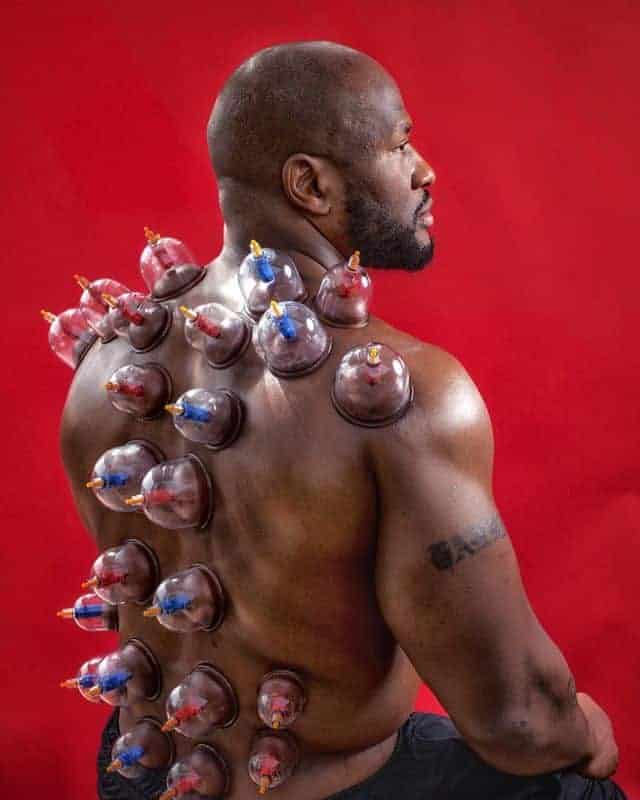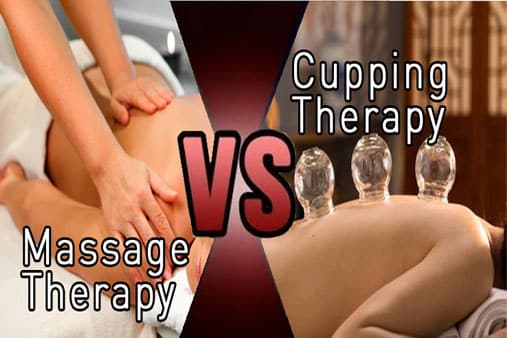With an ever-increasing population that copes with pain conditions, there is a huge variety of methods to treat the symptoms. From medications to physiotherapy and massage therapy, people have an amazing selection of treatments to choose from. One pain management method that is becoming more mainstream is Chinese cupping therapy. The use of cupping massage has been shown to effectively treat chronic pain. This form of therapy is becoming more common, but some may not know of it. You may be asking, what is cupping therapy? Let’s take a look at cupping therapy to learn how it can help.
Cupping therapy, or Chinese cupping, is the art of using different types of cups that could be made of different materials to help create a mild suction on the body. A traditional cupping therapy set may be made of bamboo or ceramic while more modern ones can be made from metals, silicone or plastics. In one of the older forms of cupping therapy, known as fire cupping, a fire was used to heat the air inside the cup to create a vacuum. Modern methods use suction to avoid burns.
What are the differences between Cupping and Massage Therapy?
Cupping can also be used in conjunction with deep tissue massage. While massage relaxes muscles by using direct pressure to release the tension, cupping uses negative pressure to lift the muscle fibers. Deep tissue massage by itself is great for releasing knots and tension, but when it’s combined with cupping, the client will get even more relief as the skin, muscle and blood vessels are stretched and massaged before being relaxed back into their normal position.
Cupping massage went out of mainstream use by the late 1800s but has begun making a huge comeback. Celebrities and athletes have brought this traditional method into the public eye. Jennifer Aniston, Michael Phelps, and Kim Kardashian are just a celebrities that use this technique. Recently National Geographic posted a photo by fritzphotos on its Instagram showing NHL New England Patriots linebacker James Harrison got treated by a massage therapist using cupping therapy.

Cupping is gaining popularity for the use of pain relief. Cupping for fibromyalgia is being used alongside Westernized medicine for this chronic, lifelong disorder. It is proving beneficial for pain relief and management.
Although there isn’t much scientific proof for the benefits of cupping, testimonials are easily found about the different uses of this ancient Chinese method. Every day, people are discovering uses that range from muscle relaxation to blood stimulation. This technique does leave behind cupping marks and cupping bruises that can be startling to new clients, but the procedure itself should be relatively painless.
Older, more traditional forms of cupping used fire inside the cups to create the vacuum. There were incidents of burns being caused by fire cupping, so more modern forms of the practice use silicone or plastic cups that have small pumps to help pull a suction. These newer cups have allowed for fewer injuries during the procedure. The cupping marks and cupping bruises that occur are not actually caused by injury but by blood being drawn to the surface of the skin. One way to prevent the bruising from being too dark or injury occurring to the skin is to move the cups around.
How is cupping performed
There are several types of cupping techniques which include wet, dry, stagnant and dynamic cupping as well as fire cupping. These all performed differently and are used for different reasons.
1. Dry cupping is the use of cupping to draw the skin up into the cups. It can use heat or a pumping method to draw the vacuum inside the cup. The client’s skin and muscle are pulled into the device and held in place for a small amount of time. After the vacuum is released the skin and muscle relax back into place.
2. Wet cupping takes the process two steps further. After dry cupping is performed, the practitioner will remove the cup and perform tiny cuts with a scalpel or needles. This allows the contaminated blood to flow and drain from the client’s body. Another cup will be placed in the same area to catch the blood. At the end of the session, the cuts will be treated with antiseptic and bandages.
3. Stagnant cupping versus dynamic cupping.
Dry cupping has to variants; stagnant and dynamic. Stagnant cupping occurs when the practitioner leaves the cups in one place for the full treatment. The bruising will generally be darker. Dynamic cupping takes place when the technician creates the suction and then moves the cups around to stimulate the lymphatic system, organs, and blood vessels.
Cupping detox is another common use. By pulling the muscle fibers up and allowing oxygenated blood to flow more easily. Toxins are pulled out of the blood and lymph system and up through the skin. Cupping detox will leave darker bruises that indicate areas of stagnation. The more often cupping is performed, the lighter the colors should become.
With cupping becoming such a widely accepted practice, Both physiotherapy clinics in Milton and Pickering, Ontario of Pro Fusion Rehab are offering the community another option for pain management and relaxation. The experienced therapists offer this holistic method to work alongside Western medicine. The clinic is giving clients top care for their health.
What can you expect during a cupping appointment?
Depending on the type of cupping and what you are going in for, you will have several cups placed on your body, depending on where you want the treatment. For a stagnant treatment, the cups will be left in place and for a dynamic treatment, the technician will move them around. You may feel some pinching if a knot is located. Upon the release of the skin and muscle, you should feel an immediate lack of tension and more relaxation.
Cupping has long been used in holistic and alternative medicine practices, but it has definitely gained acceptance in the Westernized world. It has been found to work wonderfully when coupled with more modern practices. With no physical trauma to the body, the benefits of this ancient practice are well worth exploring. You may find that it helps with relaxation, toxin removal, and pain relief when used regularly.
